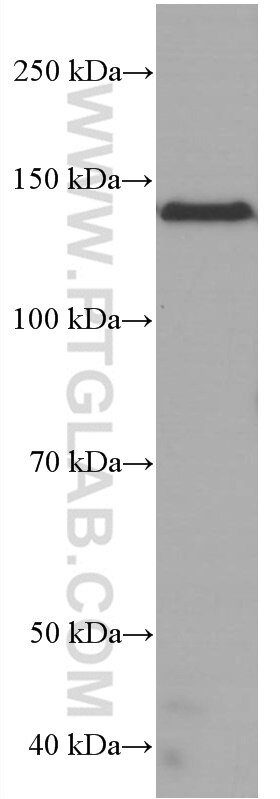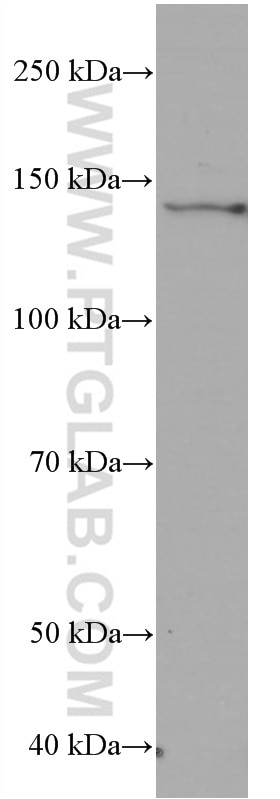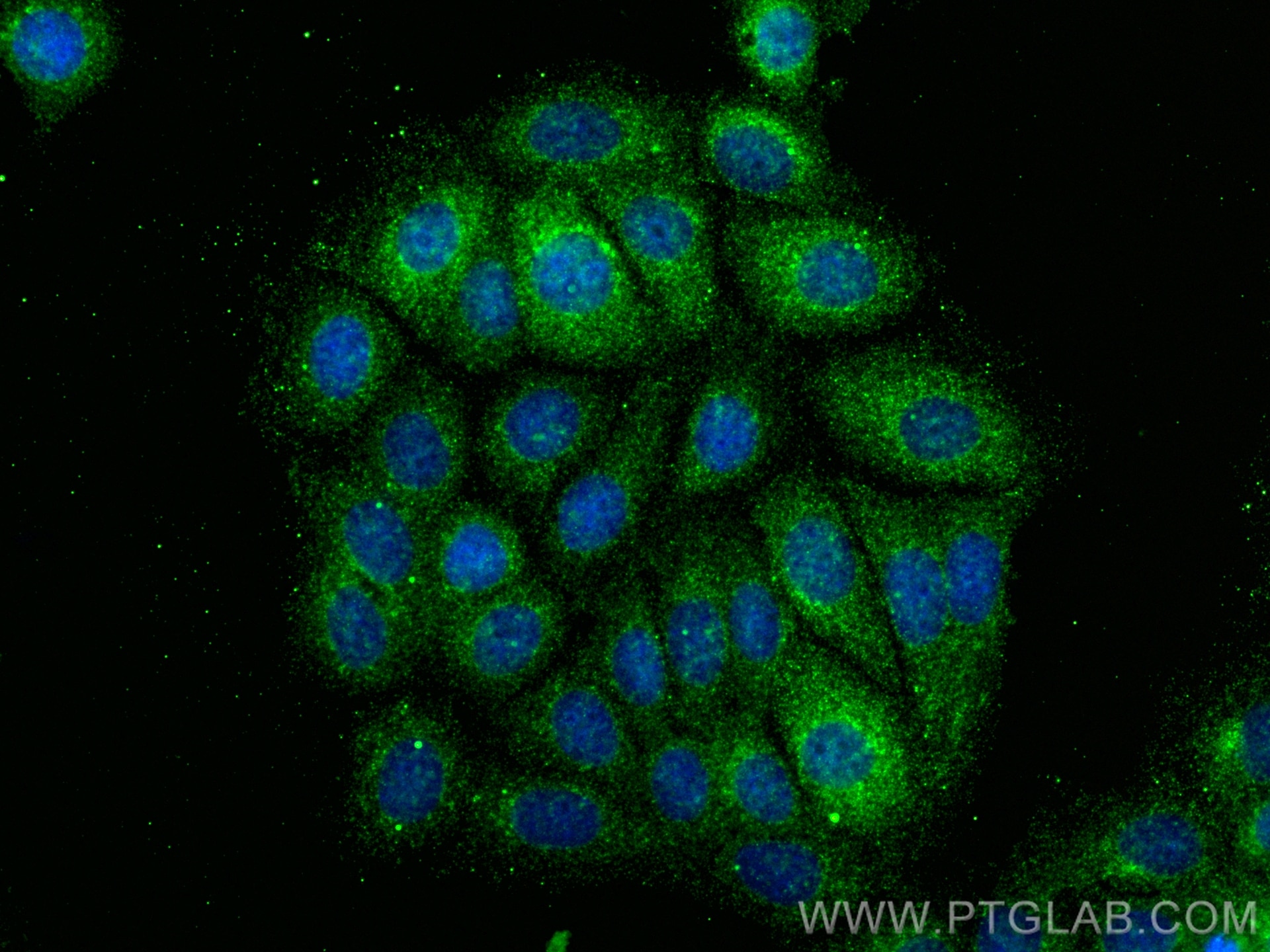Validation Data Gallery
Tested Applications
Recommended dilution
| Application | Dilution |
|---|---|
| It is recommended that this reagent should be titrated in each testing system to obtain optimal results. | |
Product Information
66790-1-PBS targets RGS3 in WB, IF/ICC, ELISA applications and shows reactivity with human samples.
| Tested Reactivity | human |
| Host / Isotype | Mouse / IgG1 |
| Class | Monoclonal |
| Type | Antibody |
| Immunogen |
CatNo: Ag3177 Product name: Recombinant human RGS3 protein Source: e coli.-derived, PGEX-4T Tag: GST Domain: 1-241 aa of BC018072 Sequence: VIRPGFQRACVAAACTVAARCPGRGVGDRSQSGASYRPICGPKVGGPTEMLRGMYLTRNGNLQRRHTMKEAKDMKNKLGIFRRRSESPGAPPAGKADKMMKSFKPTSEEALKWGESLEKLLVHKYGLAVFQAFLRTEFSEENLEFWLACEDFKKVKSQSKMASKAKKIFAEYIAIQACKEVNLDSYTREHTKDNLQSVTRGCFDLAQKRIFGLMEKDSYPRFLRSDLYLDLINQKKMSPPL 相同性解析による交差性が予測される生物種 |
| Full Name | regulator of G-protein signaling 3 |
| Calculated molecular weight | 1198 aa, 132 kDa |
| Observed molecular weight | 140 kDa |
| GenBank accession number | BC018072 |
| Gene Symbol | RGS3 |
| Gene ID (NCBI) | 5998 |
| RRID | AB_2882134 |
| Conjugate | Unconjugated |
| Form | |
| Form | Liquid |
| Purification Method | Protein G purification |
| UNIPROT ID | P49796 |
| Storage Buffer | PBS only{{ptg:BufferTemp}}7.3 |
| Storage Conditions | Store at -80°C. |
Background Information
RGS3 belongs to a family of proteins which share the core regulator of G-protein signalling (RGS) domain and function as GTPase-activating proteins (GAPs) for the α subunit of heterotrimeric G-proteins. RGS3 has been reported to inhibit the Gai-and Gaq-mediated signaling pathways in the cardiovascular system, including those acting via the cardiovascular signaling molecules angiotensin II (Ang II), sphingosine 1-phosphate and endothelin-1. Alternative splicing and the use of alternative promoters results in multiple transcript variants encoding different isoforms. Long isoforms are largely cytosolic and plasma membrane-associated with a function in Wnt signaling and in the epithelial mesenchymal transition, while shorter N-terminally-truncated isoforms can be nuclear.



